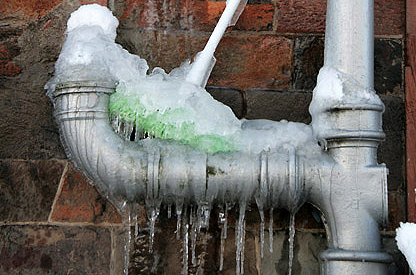Protect Against Frozen Pipes in Cold Weather: Professional Tips
Protect Against Frozen Pipes in Cold Weather: Professional Tips
Blog Article
What're your insights and beliefs about Prevent Frozen Pipes ?

Cold weather can ruin your plumbing, particularly by freezing pipelines. Here's how to stop it from occurring and what to do if it does.
Intro
As temperatures decline, the threat of frozen pipelines increases, possibly leading to costly repair work and water damages. Understanding just how to prevent frozen pipelines is essential for homeowners in cool climates.
Comprehending Icy Pipes
What triggers pipelines to ice up?
Pipelines ice up when exposed to temperatures below 32 ° F (0 ° C) for prolonged periods. As water inside the pipes freezes, it broadens, putting pressure on the pipe walls and potentially causing them to break.
Dangers and damages
Frozen pipes can cause supply of water disruptions, building damages, and pricey fixings. Ruptured pipes can flood homes and create considerable architectural damage.
Signs of Frozen Piping
Determining frozen pipelines early can avoid them from bursting.
Exactly how to identify icy pipelines
Try to find decreased water flow from taps, unusual smells or sounds from pipelines, and noticeable frost on subjected pipes.
Avoidance Tips
Shielding vulnerable pipes
Wrap pipes in insulation sleeves or use warmth tape to shield them from freezing temperature levels. Focus on pipes in unheated or external areas of the home.
Heating methods
Maintain indoor spaces appropriately heated, especially areas with plumbing. Open cupboard doors to permit cozy air to flow around pipelines under sinks.
Safeguarding Outdoor Plumbing
Garden hoses and outdoor faucets
Separate and drain pipes yard pipes before winter season. Install frost-proof spigots or cover exterior faucets with protected caps.
What to Do If Your Pipes Freeze
Immediate activities to take
If you suspect icy pipelines, keep taps open up to soothe stress as the ice melts. Make use of a hairdryer or towels soaked in hot water to thaw pipelines slowly.
Long-Term Solutions
Architectural modifications
Consider rerouting pipelines far from exterior wall surfaces or unheated areas. Add added insulation to attics, cellars, and crawl spaces.
Upgrading insulation
Invest in premium insulation for pipelines, attics, and walls. Correct insulation assists maintain constant temperatures and minimizes the threat of frozen pipes.
Final thought
Preventing frozen pipes calls for proactive steps and quick actions. By recognizing the causes, signs, and preventive measures, property owners can secure their plumbing throughout winter.
5 Ways to Prevent Frozen Pipes
Drain Outdoor Faucets and Disconnect Hoses
First, close the shut-off valve that controls the flow of water in the pipe to your outdoor faucet. Then, head outside to disconnect and drain your hose and open the outdoor faucet to allow the water to completely drain out of the line. Turn off the faucet when done. Finally, head back to the shut-off valve and drain the remaining water inside the pipe into a bucket or container. Additionally, if you have a home irrigation system, you should consider hiring an expert to clear the system of water each year.
Insulate Pipes
One of the best and most cost-effective methods for preventing frozen water pipes is to wrap your pipes with insulation. This is especially important for areas in your home that aren’t exposed to heat, such as an attic. We suggest using foam sleeves, which can typically be found at your local hardware store.
Keep Heat Running at 65
Your pipes are located inside your walls, and the temperature there is much colder than the rest of the house. To prevent your pipes from freezing, The Insurance Information Institute suggests that you keep your home heated to at least 65 degrees, even when traveling. You may want to invest in smart devices that can keep an eye on the temperature in your home while you’re away.
Leave Water Dripping
Moving water — even a small trickle — can prevent ice from forming inside your pipes. When freezing temps are imminent, start a drip of water from all faucets that serve exposed pipes. Leaving a few faucets running will also help relieve pressure inside the pipes and help prevent a rupture if the water inside freezes.
Open Cupboard Doors
Warm your kitchen and bathroom pipes by opening cupboards and vanities. You should also leave your interior doors ajar to help warm air circulate evenly throughout your home.

I discovered that blog entry about How to prepare your home plumbing for winter weather when doing a search on the internet. In case you appreciated our post plz don't forget to share it. I am grateful for your time. Revisit us soon.
Call Today Report this page